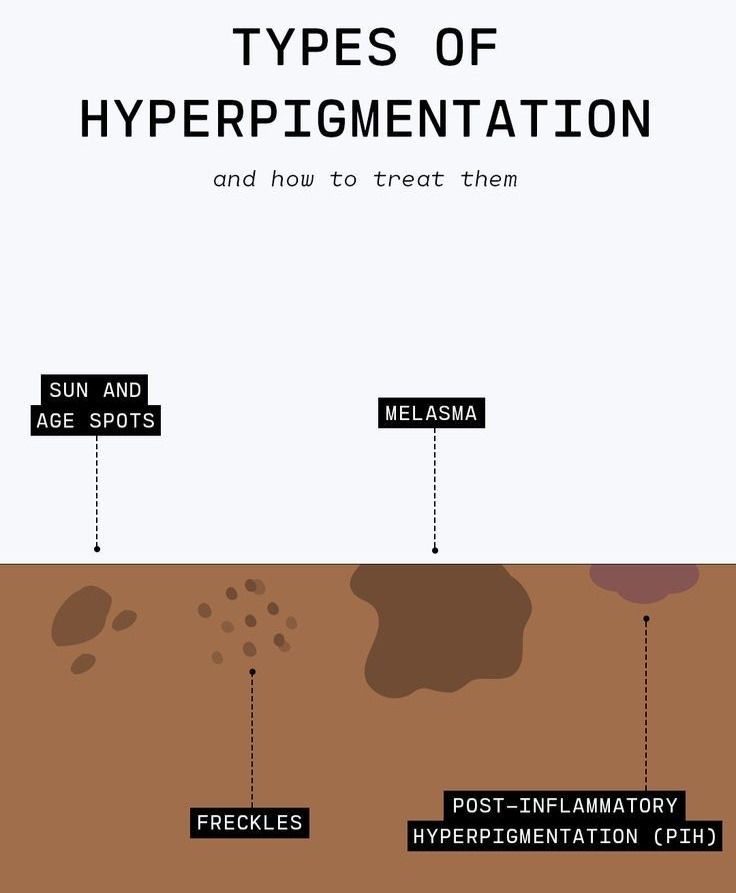Say Goodbye to Dark Spots: Your Ultimate Guide to Clear, Glowing Skin

Hyperpigmentation, characterized by the darkening of certain areas of the skin, is a common skin concern that can affect individuals of all ages and skin types. Whether caused by sun exposure, hormonal changes, inflammation, or injury, the quest to achieve an even skin tone often becomes a top priority. In this comprehensive guide, we'll explore the causes of hyperpigmentation and delve into effective treatments and preventive measures.
Understanding hyperpigmentation

Before diving into treatments, it's essential to understand the factors that contribute to hyperpigmentation. Melanin, the pigment responsible for skin color, can become unevenly distributed, leading to dark spots or patches. Common causes include:
Sun exposure
Prolonged exposure to the sun's harmful UV rays can trigger an overproduction of melanin, leading to sunspots and freckles.
Hormonal changes
pregnancy, birth control pills, and hormonal fluctuations can stimulate melanin production, causing conditions like melasma.
Inflammation and injury
Acne, cuts, or skin injuries can result in post-inflammatory hyperpigmentation as the skin heals.
Genetic factors
Some individuals may be genetically predisposed to develop hyperpigmentation
Treatment options:
Topical treatments
Skin lightening agents: Ingredients like hydroquinone, kojic acid, azelaic acid, licorice extract, mulberry extract, and alpha arbutin can help inhibit melanin production.
Retinoids: Retinol and prescription retinoids promote skin cell turnover, aiding in fading dark spots.
Chemical peels
Professional chemical peels, often performed by dermatologists, exfoliate the skin's top layer, reducing hyperpigmentation.
Laser therapy
Lasers target melanin in the skin, breaking it down and promoting a more even skin tone
Microdermabrasion
This non-invasive procedure involves the removal of the outer layer of skin, diminishing hyperpigmentation.
Microneedling
Fine needles stimulate collagen production, aiding in the reduction of dark spots over time.
“Be black. Your blackness is your strength. Above all else, remain empowered in it.” – Mitta Xinindlu
Preventive measures
Sun protection
Apply broad-spectrum sunscreen with at least SPF 30 daily, even on cloudy days
Wear protective clothing and seek shade to minimize sun exposure.
Gentle skincare
Avoiding harsh products that may irritate the skin.
Use a mild cleanser and moisturizer suitable for your skin type.
Healthy lifestyle
Maintain a balanced diet rich in antioxidants and vitamins.
Stay hydrated to support overall skin health.
Manage hormones:
Consult with a healthcare professional to address hormonal imbalances.
Be cautious with hormonal medications that may contribute to pigmentation changes
Treating hyperpigmentation requires a multifaceted approach, combining targeted treatments with preventive measures. While some treatments may show quick results, patience is key, as achieving an even skin tone is often a gradual process. Consulting with a dermatologist can help tailor a treatment plan to individual skin needs, ensuring a radiant and confident complexion. Remember, a consistent skincare routine and protective measures are fundamental to beautifully balanced skin.
Comments